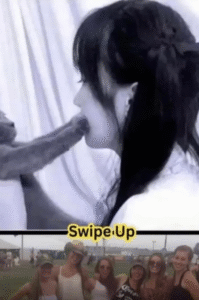📷 The Art of the Double Take: A Journey Through Illusion and Surprise
In a world saturated with images, it takes something truly unexpected to make us pause. Not just pause—but squint, tilt our heads, and laugh. That’s the magic of pictures that need a second look. They’re not just photographs; they’re puzzles, provocations, and playful tricks of the eye. They invite us to slow down, to question what we see, and to rediscover the joy of curiosity.
These images often hinge on one of three things: perfect timing, optical illusion, or unexpected context. A dog leaping mid-air might look like it’s flying. A shadow cast at just the right angle might turn a mundane object into something surreal. A person’s pose might align so precisely with the background that they seem to vanish or transform. These are not accidents—they’re serendipities. And they remind us that the world is full of wonder if we’re willing to look twice.
🌀 Illusion as Invitation
One of the most common themes in these collections is the optical illusion. A cat curled up on a patterned rug might disappear entirely. A tree’s branches might mimic the shape of a person’s hair. A reflection in a puddle might create a portal to another world. These illusions don’t just trick the eye—they invite the imagination. They ask us to suspend our assumptions and see the world not as it is, but as it could be.
In this way, these pictures echo the spirit of surrealist art. Think of René Magritte’s The Treachery of Images or Salvador Dalí’s melting clocks. The message is clear: reality is slippery. What we see is shaped by how we see. And sometimes, the most ordinary things—like a sidewalk, a shadow, or a splash of water—can become extraordinary when viewed from the right angle.
😂 Humor in the Unexpected
Many of these images are funny. Not in a forced or scripted way, but in a spontaneous, delightful way. A dog’s face perfectly aligned with a human’s body. A child’s toy that looks like it’s staring into your soul. A palm tree that seems to be gossiping with a lamppost. These moments are hilarious because they’re real. They weren’t staged or Photoshopped—they just happened. And someone was lucky enough to capture them.
This kind of humor is deeply human. It’s the laughter of recognition—the joy of seeing something familiar in a new light. It’s the giggle that comes from realizing you’ve been tricked, but in a way that feels playful, not cruel. These pictures remind us that the world is full of jokes waiting to be discovered. All we have to do is look.
🧠 The Psychology of the Second Look
Why do we love these images so much? Psychologists might say it’s because they engage our pattern recognition systems. Our brains are wired to make sense of visual input quickly. When something doesn’t fit—when a picture defies our expectations—we’re forced to slow down and reprocess. That moment of confusion, followed by clarity, is deeply satisfying. It’s like solving a riddle or catching a pun.
There’s also a social dimension. Sharing these images is a way of saying, “Look what I found!” It’s an invitation to marvel together. In a digital age where attention is fleeting, these pictures create moments of connection. They’re tiny acts of wonder that ripple outward.
🌍 Cultural Reflections
Interestingly, the popularity of these images spans cultures. Whether it’s a street scene in Tokyo, a beach in Brazil, or a backyard in Berlin, the appeal is universal. That’s because the themes—illusion, humor, surprise—are universal. They tap into something primal: our desire to understand, to laugh, and to be amazed.
In German visual culture, for instance, there’s a long tradition of engaging with ambiguity and layered meaning. From the philosophical depth of Romantic landscapes to the psychological intensity of Expressionist portraits, German art often asks viewers to look deeper. These “second look” pictures echo that tradition in a modern, playful way.
🖼️ From Snapshot to Story
Each picture in these collections tells a story. Not a linear narrative, but a moment frozen in time. A man walking his dog might become a mythic figure if the light hits just right. A child playing in the sand might seem to levitate. These stories are open-ended. They don’t explain themselves. They invite interpretation.
And that’s the beauty. These images don’t just show us something—they ask us to participate. To imagine what came before and what might come after. To fill in the blanks with our own curiosity.
✨ Why We Keep Looking
In the end, these pictures remind us of something essential: the world is more interesting than we think. It’s full of surprises, illusions, and moments of magic. But we have to be willing to look. Not just once, but twice. Maybe even three times.
So the next time you scroll past a photo that seems strange, pause. Tilt your head. Zoom in. Laugh. Wonder. Because sometimes, the best stories aren’t the ones we’re told—they’re the ones we discover when we take a second look.



